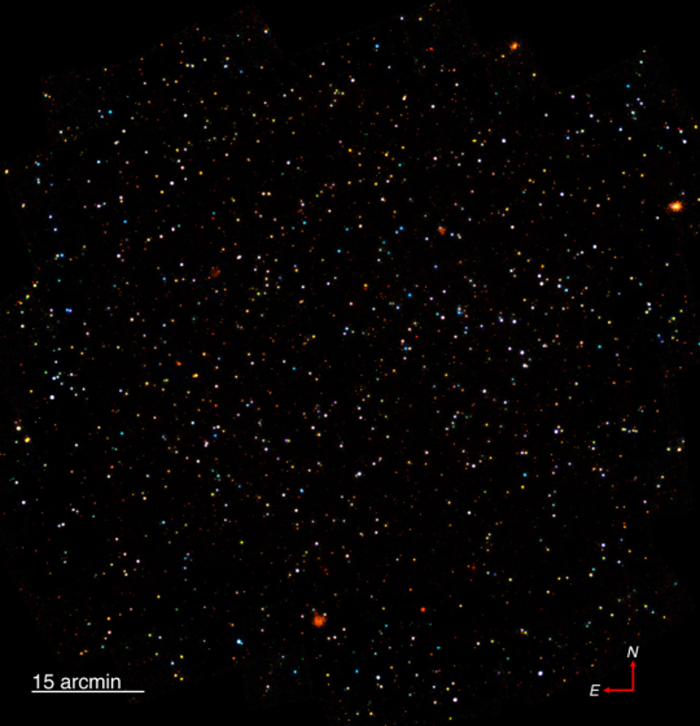
 Credit: X-ray: NASA/CXC/ICE/M.Mezcua et al.
Credit: X-ray: NASA/CXC/ICE/M.Mezcua et al.
The Growing Darkness
Galaxy formation from the big bang to today is a process that is not yet well understood by scientists. How did tiny fluctuations near the birth of the Universe organize themselves into massive galaxies (not to mention stars and planets). One particularly important mystery is the relation between the central supermassive black holes and the galaxy in which they reside. To help understand the history of supermassive black hole formation and galaxy formation, astronomers have performed a detailed study, called the Cosmic Evolution Survey (COSMOS), of a particularly well-chosen patch of the sky. This patch of sky is large (about 16 times the size of the full moon), accessible to ground-based observing facilities in both the northern and southern hemispheres, and contains lots of galaxies but few stars or other annoying local components within the Milky Way. Galaxies in the COSMOS field have been studied using large ground-based observatories like ALMA and the Karl Jansky Very Large Array, and space-based facilities like the Spitzer and Hubble Space Telescopes. Since accreting black holes are luminous X-ray sources, X-ray observations provide an important means to study how black holes within these galaxies accrete matter and grow. X-rays are especially good for finding "hidden" black holes, which are obscurred behind thick disks of dust. The image above shows the X-ray emitting sources detected by the Chandra X-ray Observatory in the entire COSMOS field. This image contains data from more than 53 days of observations with Chandra, and is the broadest and deepest high-resolution X-ray survey yet obtained. In this image, lower-energy X-rays are shown in red, medium energy in green, and high energy X-ray emission in blue. Detailed studies of this image, especially in the context of observations in the radio, infrared, and optical, give us an unprecedented view of how central black holes grow over a timescale of billions of years.
Published: January 7, 2019
<
HEA Dictionary ● Archive
● Search HEAPOW
● Other Languages
● HEAPOW on Facebook
● Download all Images
● Education ● HEAD
>

Each week the HEASARC
brings you new, exciting and beautiful images from X-ray and Gamma ray
astronomy. Check back each week and be sure to check out the HEAPOW archive!
Page Author: Dr. Michael F. Corcoran
Last modified Monday, 26-Feb-2024 17:10:18 EST


